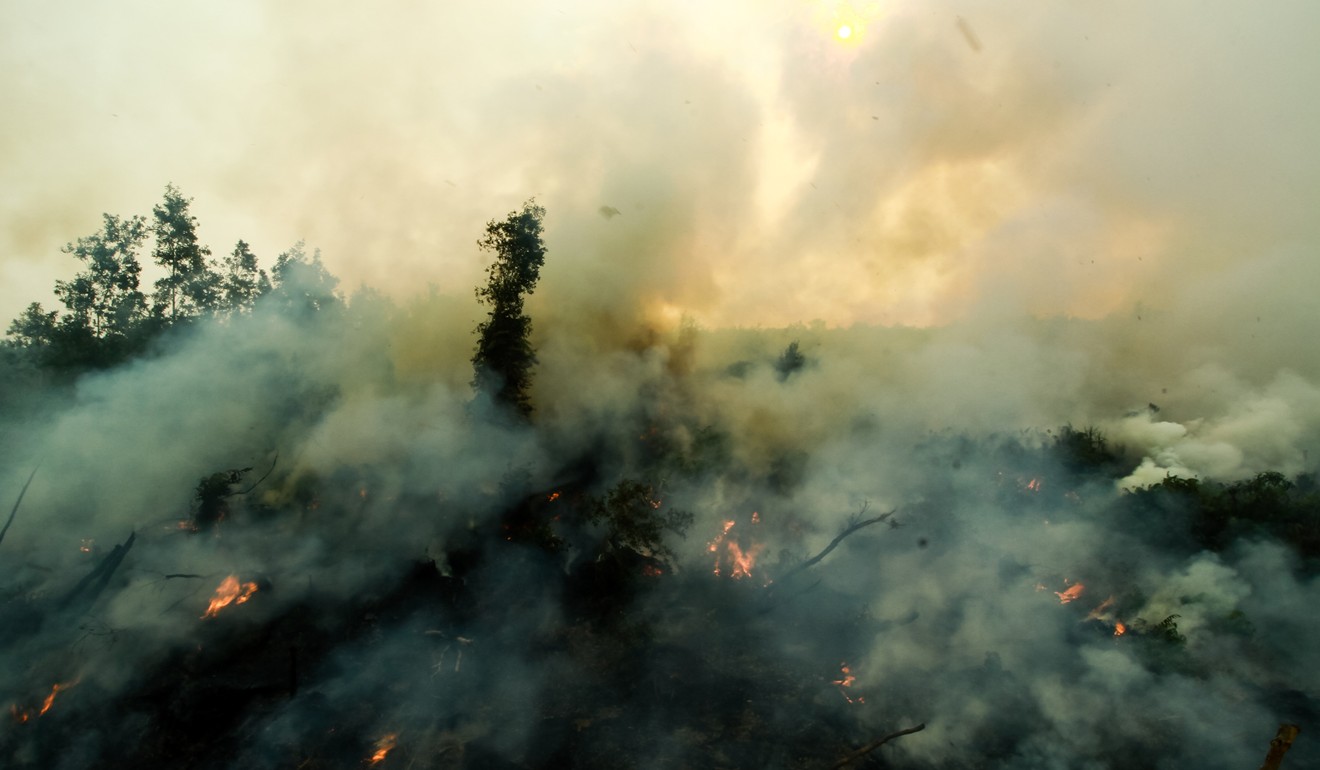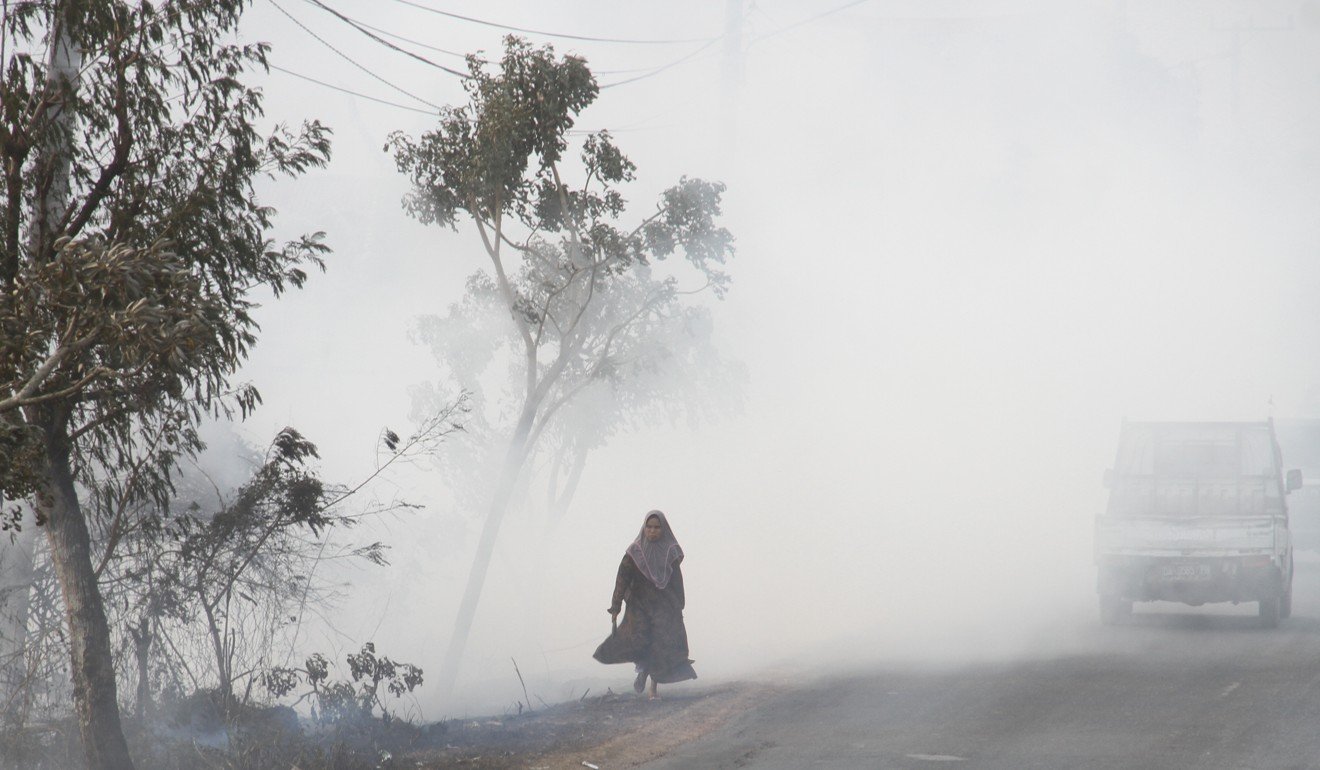The haze is back. Can Malaysia and Indonesia clear the air?
- Putrajaya has blamed – and offered help to – Jakarta, which denies full responsibility for the poor air quality
- The smog poses a health hazard to the region, while it also has negative consequences for business and tourism

Across Malaysia, skies are grey and the air smells strongly of woodsmoke – a sign that the country’s annual haze problem has returned with a vengeance.
The government has pointed the finger at – and offered its assistance to – neighbouring Indonesia, which is grappling with out-of-control forest fires in Sumatra and Kalimantan. Jakarta has denied full responsibility for the smoggy air choking the region, despite the Asean Specialised Meteorological Centre maintaining that the source of the haze was most likely Indonesia.
Indonesia’s Environment and Forestry Ministry yesterday said satellite imagery had picked up on “a significant increase in the number of hotspots in some Asean regions … Not only in Indonesia, but also occurring mainly in Peninsular Malaysia and some of Vietnam”.
Environment Minister Siti Nurbaya Bakar officially denied Malaysia’s accusation via a démarche she said was on its way to her counterpart, Malaysia’s Yeo Bee Yin. Yeo has reiterated Malaysia’s offer to assist Indonesia in extinguishing the forest fires, noting the impact of persistent transboundary haze on the Malaysian public after a meeting with the Indonesian embassy in Kuala Lumpur.
Air quality in neighbouring Singapore remains at moderate levels thanks to favourable wind conditions, but is still worse than last week.
The last major bout of smog, in October 2015, engulfed Malaysia, Singapore and Indonesia for over a month and was one of the worst cases of haze on record. It caused flights to be grounded and schools to be shut, while tens of thousands of people sought medical treatment for respiratory problems. Before that, the previous major bout of haze was in 2013.
Meanwhile, Malaysian business owners, activists and citizens fret over the economic consequences and health impacts of the haze, an annual occurrence the nation has tolerated for years. Among those hit hard are the country’s fleet of motorcycle delivery riders, gig-economy workers attached to delivery-service companies such as FoodPanda and Grab, raising questions about the need for a risk allowance as air quality levels continue to deteriorate.
“It’s difficult,” says rider Mohd Hafiz Md Aya, who is attached to a grocery delivery service. “We have to drink lots of water to stay hydrated, and wear a mask. You feel like you have a cold whenever you’re outside.”
In response to the haze, Grab Malaysia, Malaysia’s largest food-delivery and ride-hailing service, issued advisories to their riders and provided face masks and water at designated pit stops.
“In regards to hazard pay, at the moment we have nothing in place but the team is monitoring the situation with our delivery partners,” said a company spokesman.
Although companies do not currently pay a risk allowance, it would be “a welcome move” to protect gig economy workers, said Malaysian Trades Union Congress secretary general J. Solomon.
“Many companies will provide riders with a mask, but naturally we would welcome a risk allowance,” he said. “But ideally, workers would not be sent out during this period, particularly in areas with very unhealthy air pollutant levels. The government should be discouraging workers from going out in this kind of situation unless it is really warranted, and in those cases they should be asked to use cars.”
The haze has also impacted eco-tourism, said activist Andrew Sebastian of the Ecotourism and Conservation Society of Malaysia.

“Tour cancellations, distressed animals, even flowering plants and pollination are affected. Everyone suffers. Time for us to take private legal action against the Indonesian government, and censure our own government for their lackadaisical non-leadership as well.”
The annual haze brings with it high costs, according to Southeast Asian transboundary pollution expert Helena Varkkey of University Malaya, and cross-boundary cooperation hasn’t improved the issue.
“The nature of cross-boundary cooperation has been very status quo for years – polite diplomatic notes, offers of assistance, Asean meetings. It all still comes down to the speed at which Indonesia declares emergencies and its willingness to receive external assistance,” she said.
“Historically, regions have been slow at this as they do not want to admit they cannot handle their land issues themselves – but fires, especially on peat, must be handled swiftly otherwise they will grow quickly,” Varkkey said, adding that Malaysia’s reluctance to address its own baseline pollution has also compounded the problem.
“In the past, Indonesia and Malaysia have had [memorandums of understanding] for joint training to combat fires and for land management, but recently Indonesia has refused to renew this MOU so there seems to be a slight step backwards there.”

In Indonesia, forest and peatland are burned to clear land for agriculture. President Joko Widodo, now serving his second term, has instituted policies to prevent fires and slow deforestation, including making a ban on forest-clearing permanent.
A slew of areas in Malaysia have recorded unhealthy air pollution levels on the country’s official Air Pollutant Index, including the administrative capital of Putrajaya and the sprawling city of Petaling Jaya. Seven of the country’s 13 states have been affected, with some areas recording a pollutant index score as high as 207.
Malaysia’s official air pollutant index categorises a score of zero to 50 as good, 51-100 as moderate, 101-200 as unhealthy, 201-300 as very unhealthy, and 301 above as hazardous. The Asean Specialised Meteorological Centre has warned that the haze is likely to worsen over the next few weeks due to dry weather.
The Bornean state of Sarawak, which borders Kalimantan, has shut more than 400 schools in an immediate response to the worsening air quality, and Malaysia’s Meteorological Department is expected to carry out costly cloud-seeding operations if atmospheric conditions are stable.
On Tuesday the national disaster management agency sent 500,000 face masks to the state, causing its deputy chief minister to suggest that Indonesia be sent the bill.
The Health Ministry has said it expects the number of patients seeking treatment for respiratory ailments to rise during this period, and federal Islamic authorities have urged mosques across the Muslim-majority nation to pray for rain.